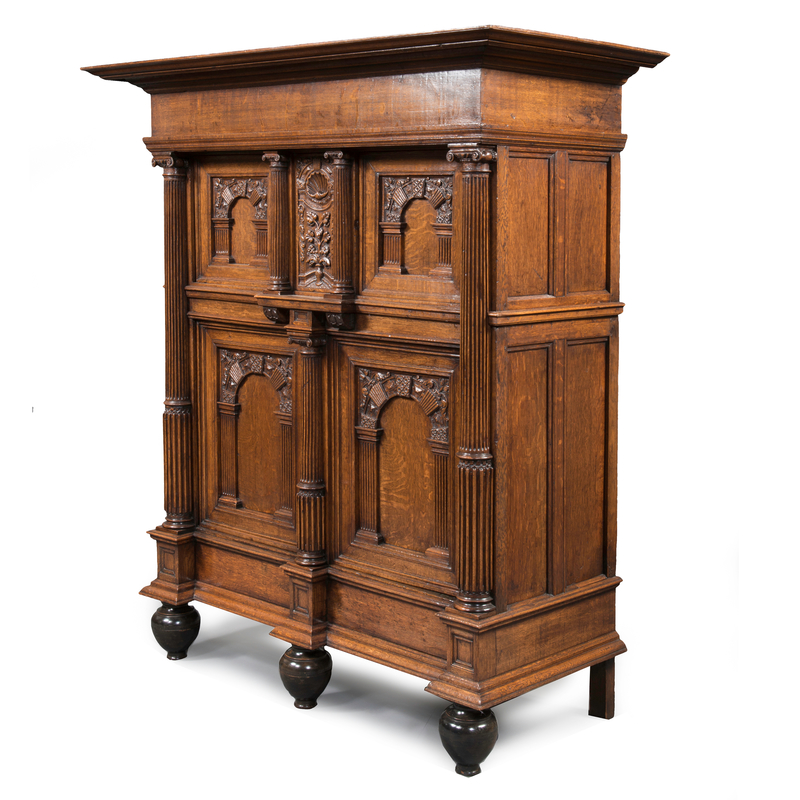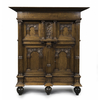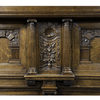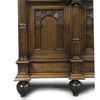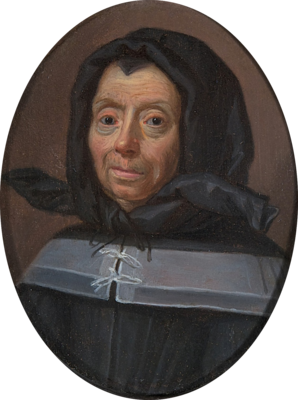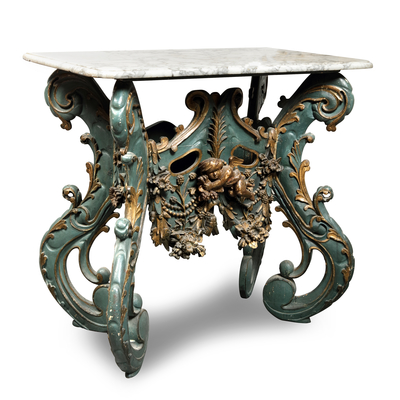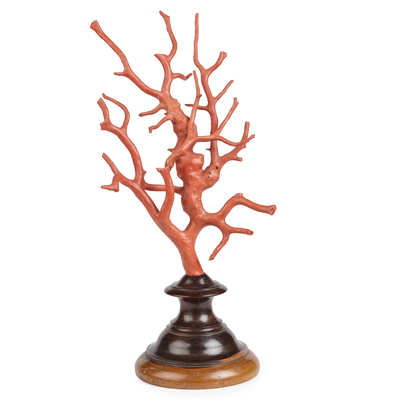Oak five-door cabinet
Global shipping available
- Origin
- Friesland, Netherlands
- Period
- Ca. 1630 - 1650
- Material
- Oak
- Height
- 210 cm
- Width
- 146 cm
- Depth
- 63 cm
- Literature
L. van Aalst & A. Hofstede, Noord-Nederlandse meubelen van renaissance tot vroege barok 1550-1670, Houten 2011, p. 240.
- Provenance
Private collection J.R. Ritman, Amsterdam
Questions about this object?
Please use one of the contact options below:
Description
This type of cabinet was made in the area of Friesland and is called an ‘Amelander cabinet’ after the island in the north of the Netherlands. It has a profiled top that leans over a completely smooth surface frieze. The colossal fluted columns placed in front of the side pilasters are crowned by an Ionic capital and end in a ribbed shaft, just like the pilasters in the upper cabinet. The top cabinet consists of two doors with characteristic Frisian arches: hexagonal blocks cut from the solid wood. The doors are flanked on both sides by riled columns. In the center, two columns border a niche with a particularly beautiful carved vase with flowers, topped by a shell. This panel is a ‘secreetje’, a secret box that can only be opened from the inside.
